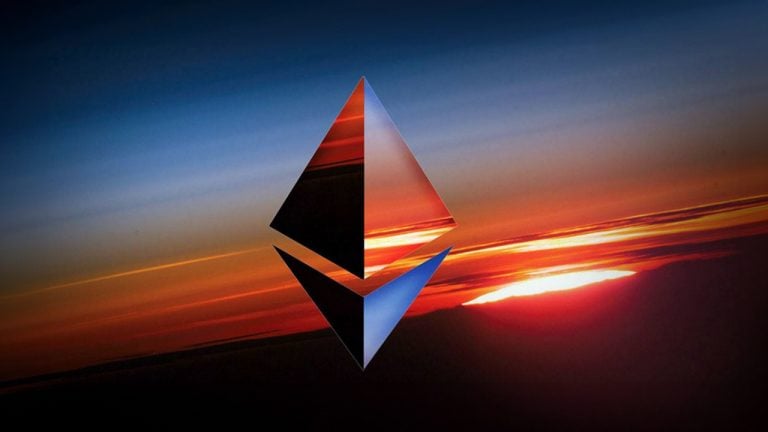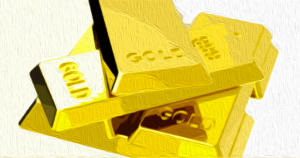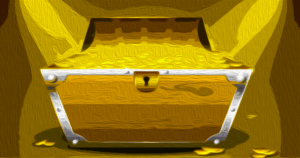
On January 29, 2024, the price of ethereum (ETH) showcases a complex interplay of market factors. Currently, ether is valued at $2,247, with a 24-hour range fluctuating between $2,246 and $2,284. Despite its significant market capitalization of $270 billion, the trading volume for ether remains relatively modest, suggesting caution among investors.
Hourly Chart: Volatility Presents Trading Opportunities
Examining the hourly chart of ethereum (ETH), it becomes evident that the ether market is characterized by volatility. Prices fluctuate between $2,246 and $2,284, providing opportunities for short-term traders or day traders. This volatility can be advantageous for traders who capitalize on short price movements, offering potential entry points at support levels and exit strategies below these points to minimize risk.
4-Hour Chart: Seeking Stability amid Fluctuations
On the 4-hour chart, ether demonstrates a modest recovery from its low point at $2,169, attempting to stabilize around $2,300. This pattern, marked by alternating rises and falls, suggests an overall downward trend, but with indications of possible stabilization. Traders are advised to exercise caution, entering the market only if a consistent pattern of increasing lows and highs becomes evident.
Daily High: Bearish Market Dominated by Sellers
The daily high of ETH highlights a significant downward trajectory, with prices dropping from approximately $2,719 to $2,034. This descent signifies a bearish market, largely influenced by sellers. Experienced traders already in the market may utilize recent lows as indicators for stop-loss orders, while potential buyers should wait for signs of a reversal before making any commitments.
Technical Indicators: Mixed Signals
Oscillators such as the relative strength index (RSI) and Stochastic indicate a neutral stance, suggesting the absence of a clear directional momentum. The commodity channel index (CCI) and the average directional index (ADI) support this neutrality. However, the momentum and moving average convergence/divergence (MACD) indicators hint at bearish nuances, implying potential downward pressure on ethereum's price.
Moving Averages: Skewed Bearish Sentiment
When examining moving averages (MAs), the sentiment leans towards a bearish outlook. The 10, 20, 30, and 50-period exponential (EMAs) and simple moving averages (SMAs) all reinforce this perspective. In contrast, the 100 and 200-period averages indicate a positive momentum, suggesting the potential for long-term growth.
Bullish Perspective: Resilience at Support Levels
Despite the bearish signals from various technical indicators, a bullish perspective can emerge from ethereum's resilience at key support levels. The alignment of long-term moving averages indicating positive sentiment suggests underlying strength and the potential for a reversal from the current downtrend. Optimism for a bullish future relies on ETH's ability to break through existing resistance levels, coupled with an increase in trading volume and positive market sentiment.
Bearish Outlook: Downward Pressure and Caution
The bearish outlook for ethereum (ETH) is reinforced by the prevailing downward trends observed in the daily chart and the bearish signals from most short-term moving averages. The neutral to bearish indications from oscillators, combined with the absence of strong buy signals, indicate ongoing downward pressure. This scenario calls for a cautious approach from both long-term and short-term traders, as further price decreases are possible unless there are significant shifts in market dynamics or investor sentiment.
What are your thoughts on ether's market action on Monday morning? Share your opinions and insights in the comments section below.
Frequently Asked Questions
Does a gold IRA make money?
Yes, but not as much. It all depends on your willingness to take on risk. If you can afford to invest $10,000 every year for 20-years, you could possibly have $1,000,000 by retirement age. You'll end up losing everything if you place all your eggs in the same basket.
Diversifying your investments is essential. When there is inflation, gold does well. You want to invest in an asset class that rises along with inflation. Stocks perform this well because they rise whenever companies increase their profits. This is also true for bonds. They pay interest every year. So they're great during times of economic growth.
But what happens when there isn't any inflation? In times of deflation, stocks are more valuable than bonds. This is why investors should avoid putting all their savings into one investment, such as a bond or stock mutual fund.
They should instead invest in a combination of different types of funds. They could also invest in bonds and stocks. They could also invest both in bonds and cash.
They are exposed to both sides of a coin. They can see both the inflation and the deflation sides of the coin. They will still see a return in time.
What are the pros & cons of a Gold IRA?
The gold IRA is a great way to diversify your portfolio, but you don't have access the traditional banking services. It allows you invest in precious metals like platinum, silver, and gold without any taxes, until they're withdrawn.
The downside is that withdrawing money early will pay ordinary income tax on the earnings. These funds are not held in the country so creditors cannot seize them if you default on your loan.
A gold IRA could be the best option for you if your goal is to have gold that you can own without worrying about taxes.
How does the gold and silver IRA function?
You can make investments in precious metals (such as gold or silver) without having to pay tax. They make a great investment choice for those looking to diversify.
If you are above 59 1/2 years old, you do not have income tax to pay on the interest earned. On any appreciation in value of the account, you don't have to pay capital gain tax. The maximum amount that you can invest in this type of account is $10,000. The minimum amount is $10,000. Under 59 1/2 years old, you can't make any investments. Maximum annual contribution is $5,000.
Your beneficiaries might not receive the full amount of your account if your death occurs before you retire. Your estate must include enough assets to cover the balance remaining in your account after all other expenses and debts have been paid.
Some banks offer gold and silver IRA options, while others require you to open a regular brokerage account through which you buy shares or certificates.
Can I store my gold IRA in my home?
An online brokerage account is the best option to protect your investment funds. You'll have access to all the same investment options as if you were working with a traditional broker, but you don't need special licenses or qualifications. You don't have to pay any fees for investing.
Many online brokers also offer tools that can help you manage your portfolio. Online brokers will allow you to download charts so that you can see the performance of your investments.
What type of IRA is used for precious metals?
Employers and financial institutions often offer Individual Retirement Accounts (IRA) as an investment vehicle. An IRA allows you to contribute money that is tax-deferred until it is withdrawn.
An IRA allows you to save taxes and pay them later when you retire. This allows for more money to be deposited in your retirement plan today than having to pay taxes tomorrow on it.
An IRA is a tax-free way to make contributions and earn income until you withdraw the funds. When you do, there are penalties for early withdrawal.
After 50 you can still make contributions to your IRA. There is no penalty. If you choose to take withdrawals from your IRA during retirement, you'll owe income taxes and a 10% federal penalty.
Withdrawals that are made prior to the age of 60 1/2 are subjected to a 5% IRS tax penalty. There is a 3.4% penalty for withdrawals between the ages 70 1/2 and 59 1/2.
An IRS penalty of 6.2% applies to withdrawals above $10,000 per year.
What is the cost of gold IRA fees
An individual retirement account's average annual fee (IRA) costs $1,000. However, there are many different types of IRAs, such as traditional, Roth, SEP-IRAs, and SIMPLE IRAs. Each type has their own set of rules. If the earnings are not tax-deferred you could be subject to taxes. It is important to consider how long you plan on keeping the money. If you plan on holding onto your funds for longer, you'll likely save more money by opening a Traditional IRA rather than a Roth IRA.
You can contribute up to $5500 per year to a traditional IRA (or $6500 if you are 50 or older). A Roth IRA lets you contribute unlimited amounts each year. The difference is that a traditional IRA allows you to withdraw your money without having to pay taxes. On the other hand, you'll owe taxes on any withdrawals made from a Roth IRA.
How does a gold IRA generate interest?
It all depends upon how much money you invest. If you have $100,000 to spare, then yes. If your assets are less than $100,000, it is no.
The amount of money that you put into an IRA is what determines whether it earns or not interest.
If you have more than $100,000 in retirement savings each year, you might consider opening a regular brokerage accounts.
While you may earn more interest there than elsewhere, you are also exposed to more risky investments. If the stock market crashes you don't wish to lose your entire investment.
An IRA may be better for you if your annual income is less than $100,000. At least until the market starts growing again.
Statistics
- Silver must be 99.9% pure • (forbes.com)
- You can only purchase gold bars of at least 99.5% purity. (forbes.com)
- Same tax rules as traditional IRA SEP IRA contributions in 2022 are limited to 25% of compensation or $66,000, whichever is less Before setting up a Silver IRA, understand the fees and IRS restrictions. (sltrib.com)
- The IRS also allows American Eagle coins, even though they do not meet gold's 99.5% purity standard. (forbes.com)
External Links
en.wikipedia.org
takemetothesite.com
investopedia.com
wsj.com
How To
How to Decide if a Gold IRA Is Right for You
Individual Retirement account (IRA), is the most widely used type of retirement plan. IRAs may be obtained from financial planners or banks as well as mutual funds and banks. The IRS allows individuals up to $5,000 in annual contributions without tax consequences. This amount can be contributed to any IRA, regardless of your age. You can only put a certain amount into an IRA, but there are restrictions. For example, if your age is less than 591/2 years old, you can't contribute to a Roth IRA. If you're under 50, you must wait until you reach age 70 1/2 before making contributions. Some people may also be eligible for matching contributions if they work for their employer.
There are two main types of IRAs: Traditional and Roth. A traditional IRA lets you invest in stocks, bonds, real estate, and other investments, while a Roth IRA lets you invest only in after-tax dollars. Roth IRA contributions can be made without tax, but they will still be subject to taxes if you withdraw from it. Some people prefer to combine these two accounts. Each type of IRA comes with its own pros and cons. How do you choose the best type of IRA for you? Here are three things to keep in mind:
Traditional IRA Pros
- Each company has its own contribution options
- Employer match possible
- More than $5,000 in savings per person
- Tax-deferred growth up to withdrawal
- Limitations may apply based on income levels
- The maximum contribution limit is $5,500 per year ($6,500 if married and filing jointly)
- Minimum investment is $1,000
- After the age of 70 1/2, mandatory distributions must be taken.
- Must be at least five years old to open an IRA
- Transfer assets between IRAs is not possible
Roth IRA Pros
- Contributions are free of taxes
- Earnings increase tax-free
- No minimum distributions
- The only options for investing are stocks, bonds, or mutual funds
- There is no maximum contribution limit
- No limitations on transferring assets between IRAs
- An IRA can only be opened by those 55 and older
Considering opening a new IRA, it's essential to know that not all companies offer the same IRAs. Some companies offer the option of a Roth IRA, while others provide a choice between a Roth IRA and a traditional IRA. Others allow you to combine them. Noting that different types IRAs have different requirements, it's worth noting. Roth IRAs do not require a minimum amount of investment, while traditional IRAs are limited to a maximum investment of $1,000.
The Bottom Line
When choosing an IRA, the critical factor is whether you want to pay taxes now or later. If you plan to retire in the next ten years, a traditional IRA might be the best choice. A Roth IRA might be better suited to you. In either case, it's a smart idea to speak with a professional about your retirement plans. It's important to have someone who is knowledgeable about the market and can suggest the best options for you.
—————————————————————————————————————————————————————————————-
By: Jamie Redman
Title: Ethereum Price Analysis: Exploring Market Dynamics and Potential Trends
Sourced From: news.bitcoin.com/ethereum-technical-analysis-eth-trade-volume-remains-low-amid-selling-pressure/
Published Date: Mon, 29 Jan 2024 14:30:57 +0000











